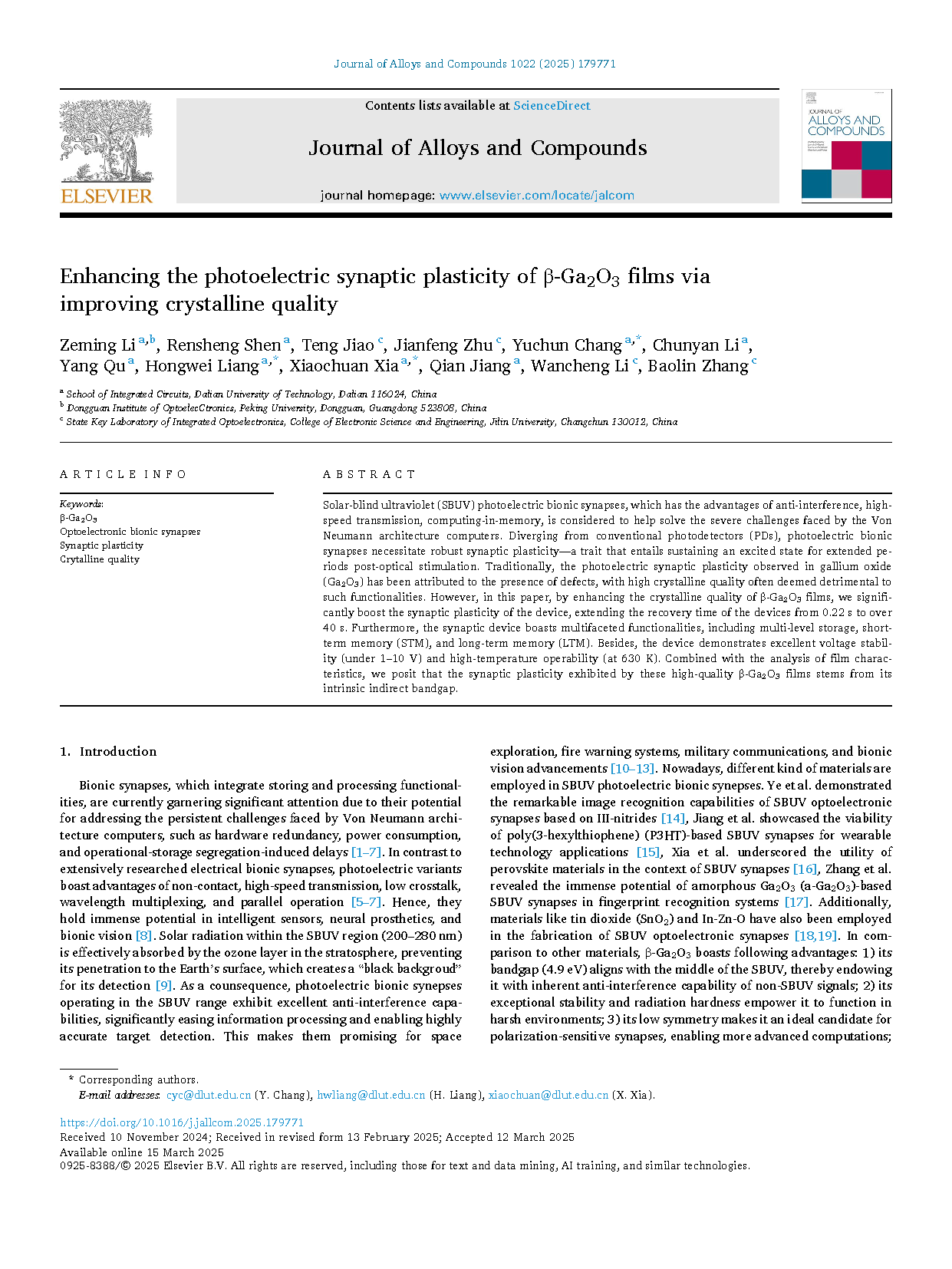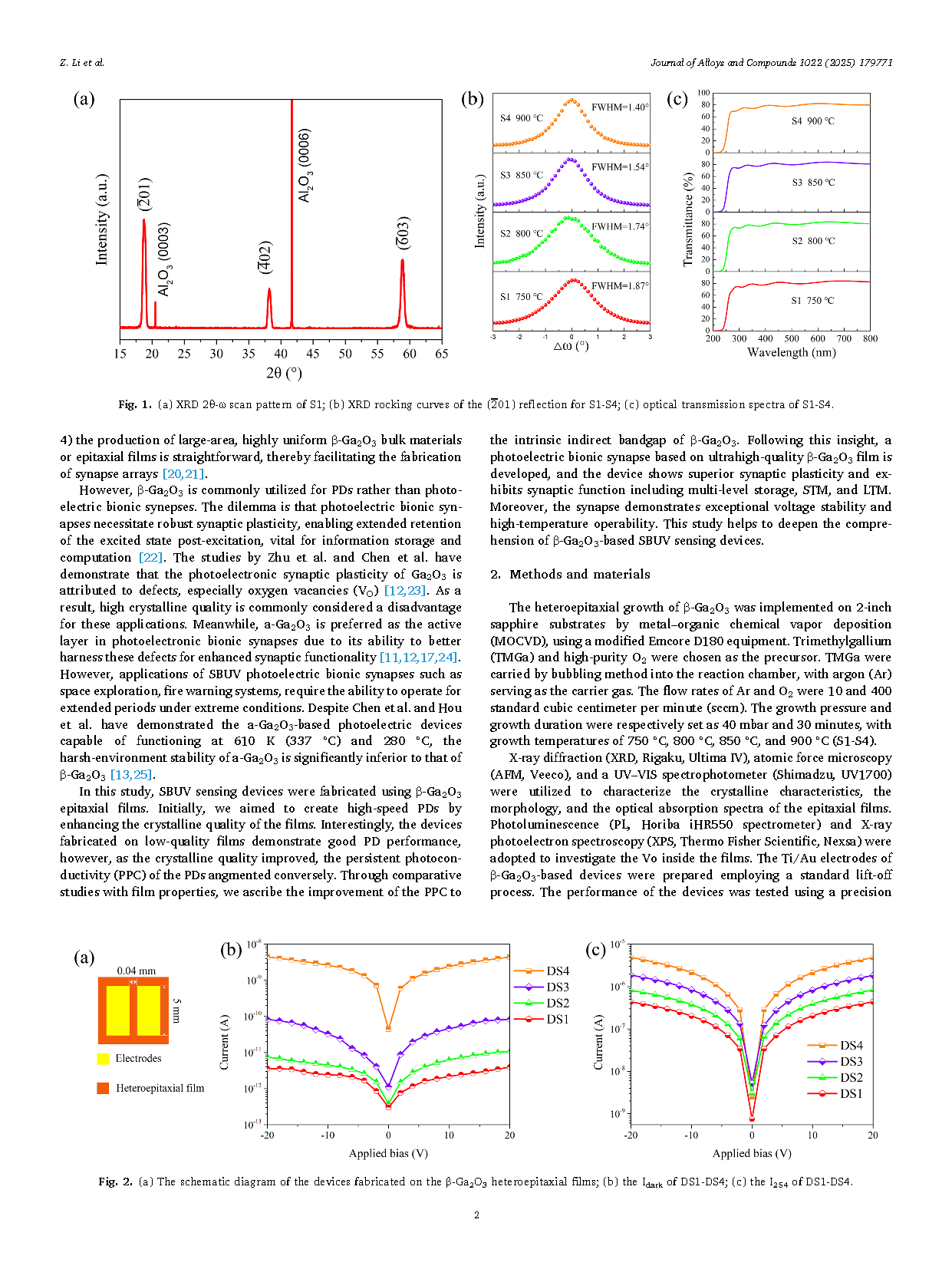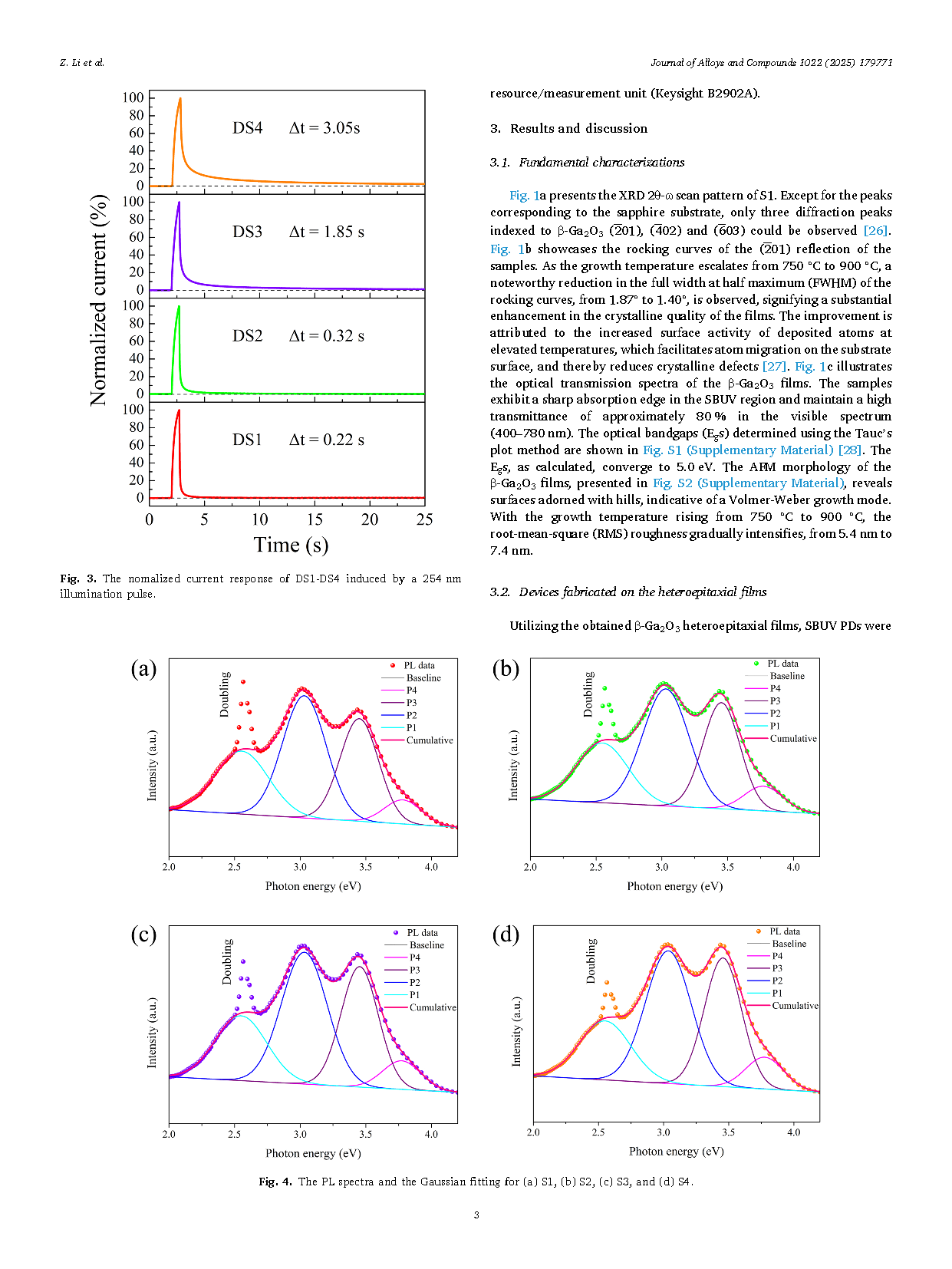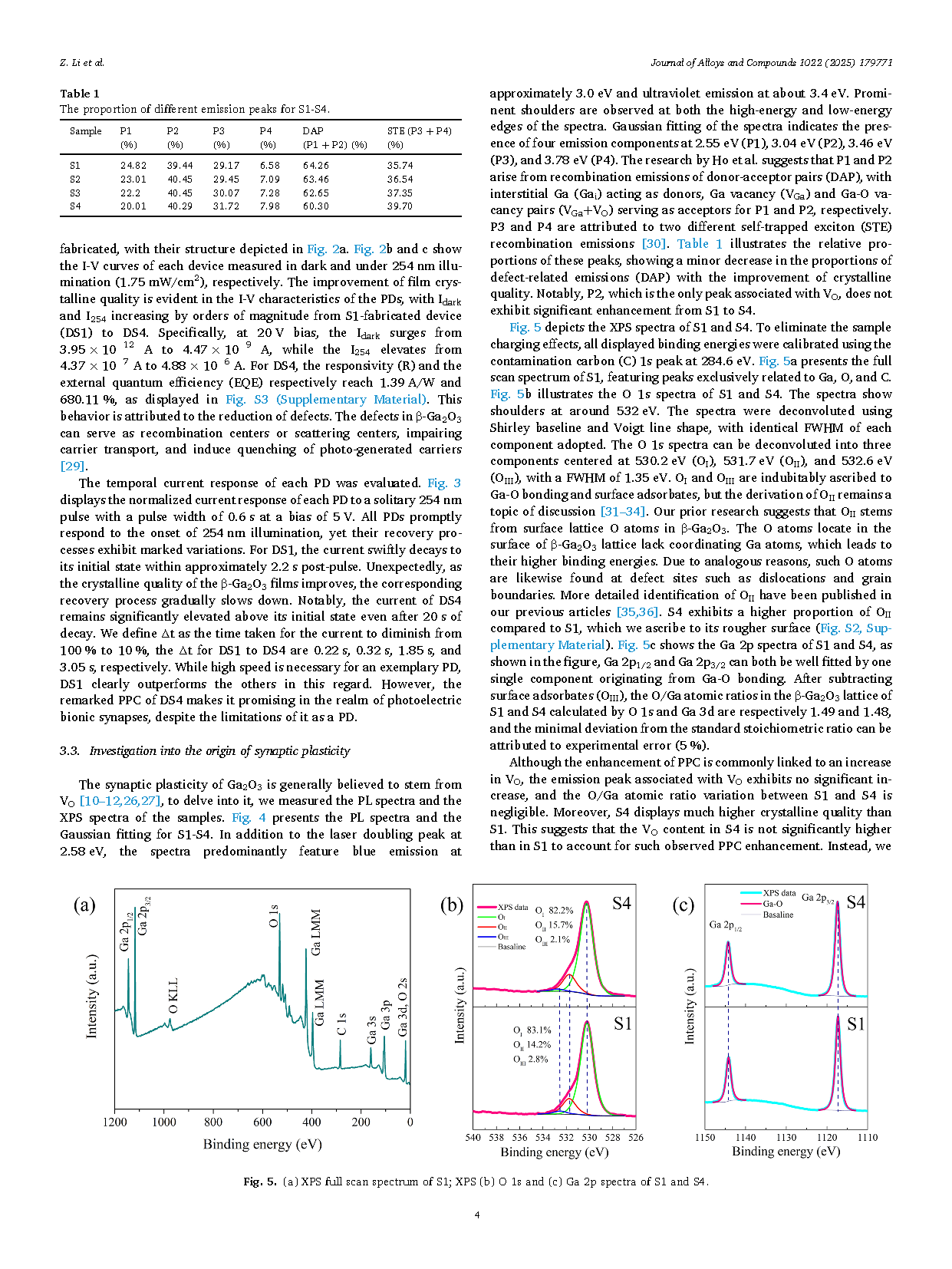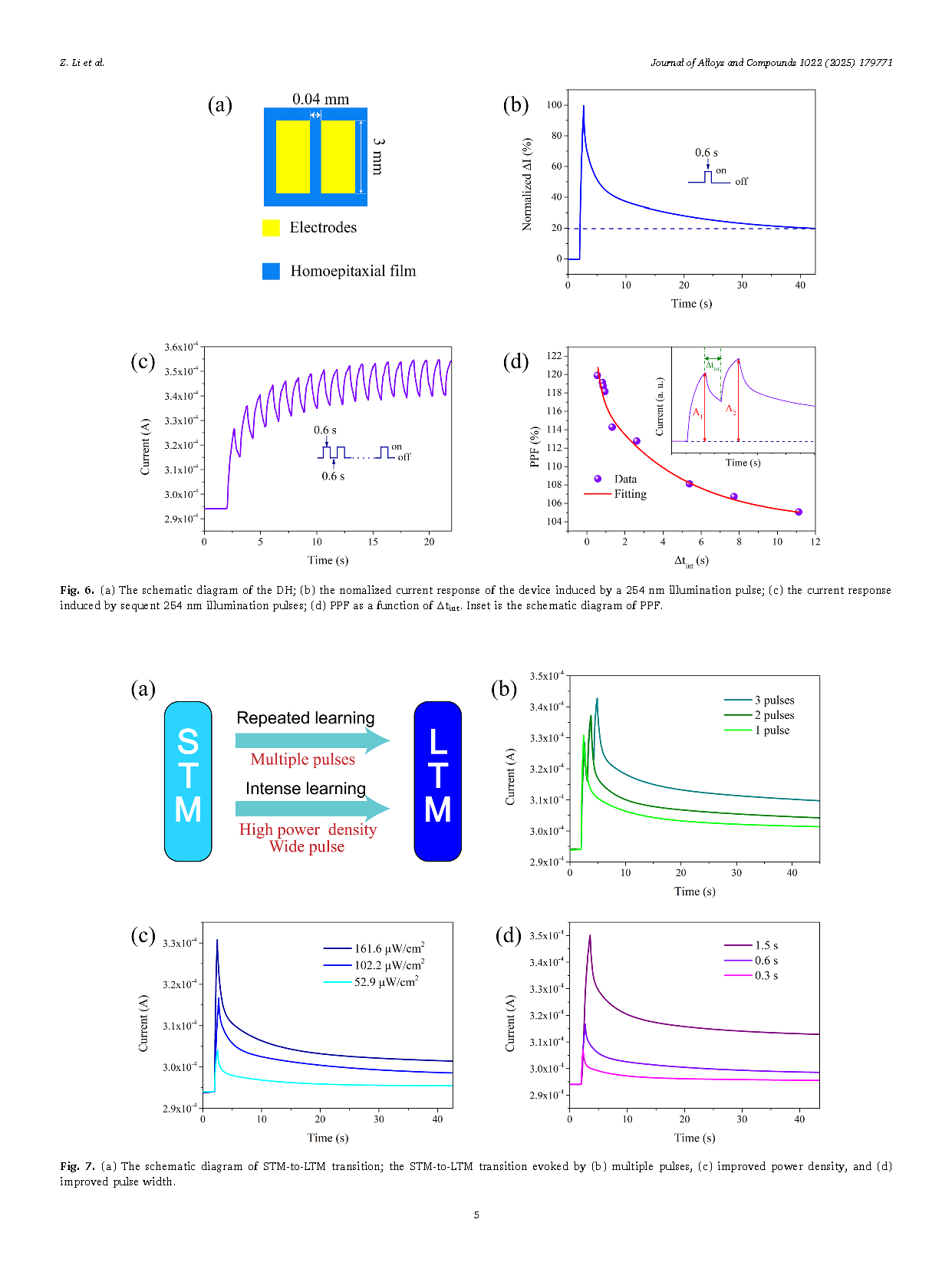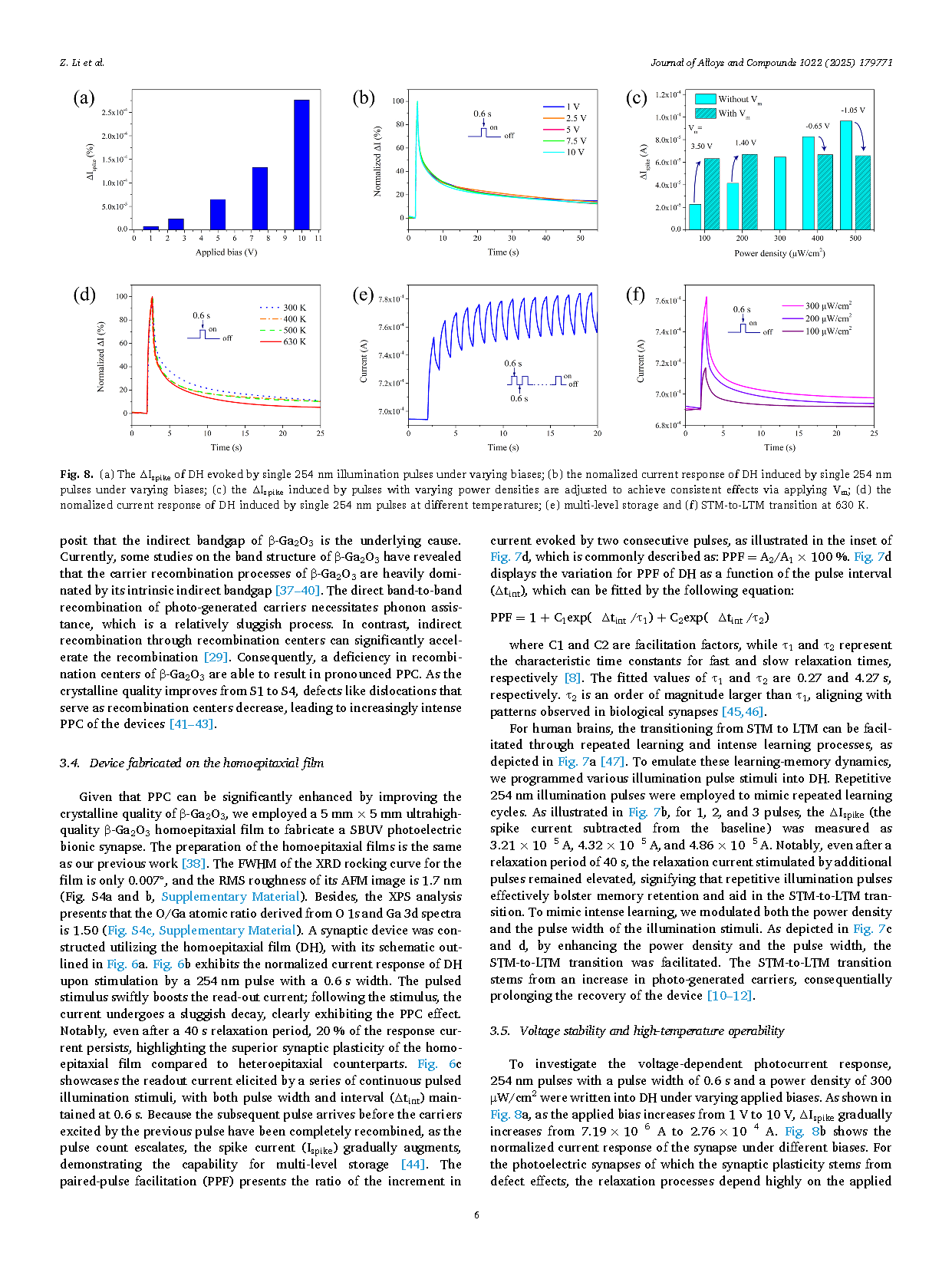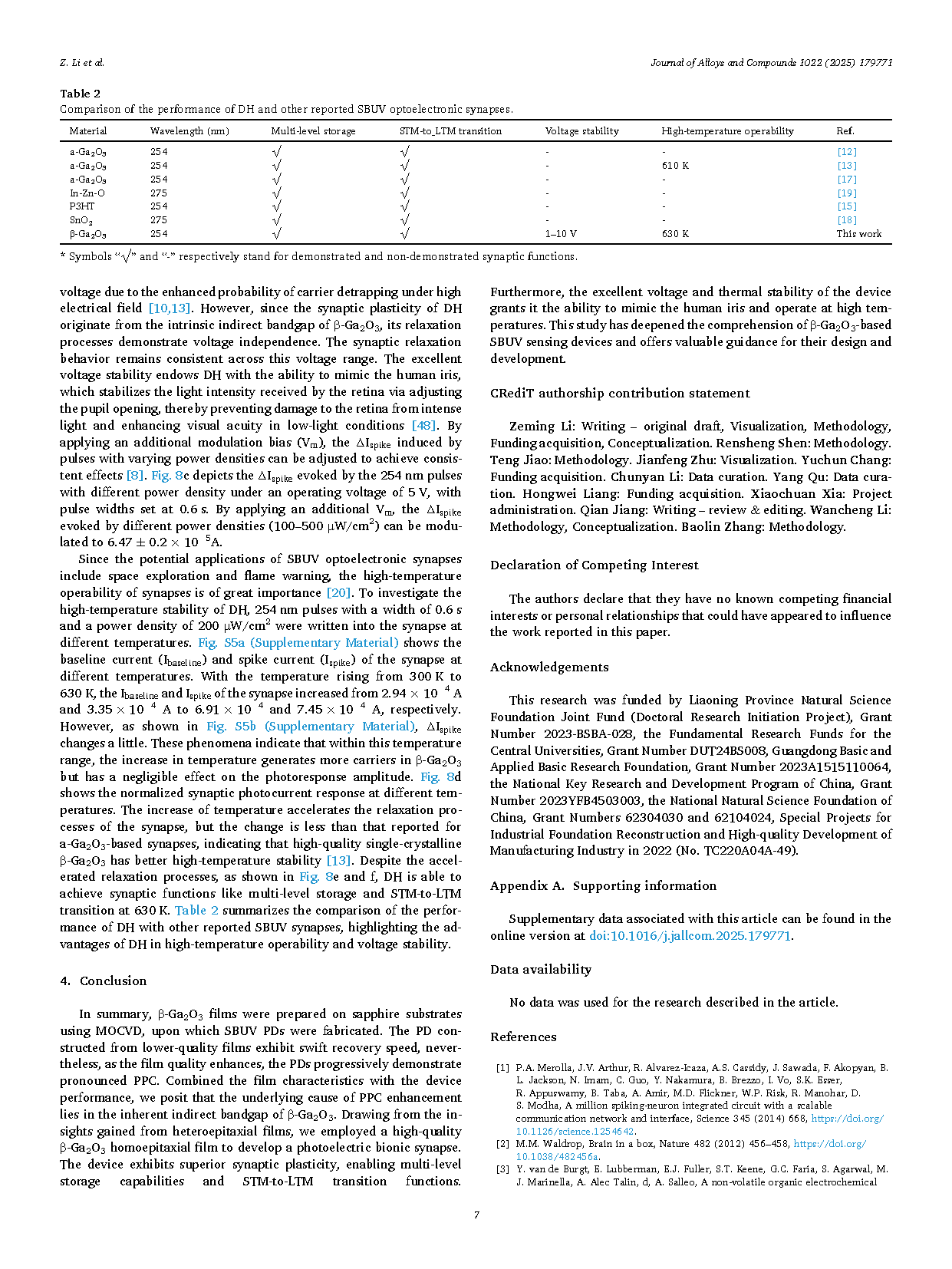
【Member Papers】Dalian University of Technology---Enhancing the photoelectric synaptic plasticity of β-Ga₂O₃ films via improving crystalline quality
日期:2025-05-08阅读:383
Researchers from the Dalian University of Technology have published a dissertation titled "Enhancing the photoelectric synaptic plasticity of β-Ga2O3 films via improving crystalline quality" in Journal of Alloys and Compounds.
Project Support
This research was funded by Liaoning Province Natural Science Foundation Joint Fund (Doctoral Research Initiation Project), Grant Number 2023-BSBA-028, the Fundamental Research Funds for the Central Universities, Grant Number DUT24BS008, Guangdong Basic and Applied Basic Research Foundation, Grant Number 2023A1515110064, the National Key Research and Development Program of China, Grant Number 2023YFB4503003, the National Natural Science Foundation of China, Grant Numbers 62304030 and 62104024, Special Projects for Industrial Foundation Reconstruction and High-quality Development of Manufacturing Industry in 2022 (No. TC220A04A-49).
Background
Bionic synapses, which integrate storing and processing functionalities, are currently garnering significant attention due to their potential for addressing the persistent challenges faced by Von Neumann architecture computers, such as hardware redundancy, power consumption, and operational-storage segregation-induced delays. In contrast to extensively researched electrical bionic synapses, photoelectric variants boast advantages of non-contact, high-speed transmission, low crosstalk, wavelength multiplexing, and parallel operation. Hence, they hold immense potential in intelligent sensors, neural prosthetics, and bionic vision. Photoelectric bionic synapses operating in the SBUV range (200–280 nm) exhibit excellent anti-interference capabilities, significantly easing information processing and enabling highly accurate target detection. This makes them promising for space exploration, fire warning systems, military communications, and bionic vision advancements. Compared to other SBUV-sensitive materials, β-Ga2O3 offers several advantages, including a bandgap (4.9 eV) that aligns with the middle of the SBUV, exceptional stability, polarization-sensitivity, and ease of fabrication. However, high-quality β-Ga2O3 is seldom utilized for bionic synapses. The dilemma is that the photoelectronic synaptic plasticity of Ga2O3 is traditionally attributed to defects, especially oxygen vacancies. As a result, high crystalline quality is commonly considered a disadvantage for these applications.
Abstract
Traditionally, the photoelectric synaptic plasticity observed in Ga2O3 has been attributed to defects, with high crystalline quality often deemed detrimental to such functionalities. However, in this paper, the research team enhanced the synaptic plasticity of the optoelectronic synaptic devices by improving the crystalline quality of β-Ga₂O₃ heteroepitaxial films, extending the recovery time from 0.22 s to 3.05 s. Inspired by this, the team further fabricated an optoelectronic synaptic device using a higher-quality β-Ga₂O₃ homoepitaxial film, thereby extending the recovery time to over 40 s. Furthermore, the synaptic device boasts multifaceted functionalities, including multi-level storage, short-term memory (STM), and long-term memory (LTM). Besides, the device demonstrates excellent voltage stability (under 1-10 V) and has the potential to simulate the function of the human iris. Moreover,the device showcases excellent high-temperature operability (at 630 K). Combined with the characterization analysis of the films like PL and XPS, the research team posit that the synaptic plasticity exhibited by these high-quality β-Ga2O3 films stems from the intrinsic indirect bandgap of β-Ga2O3.
Conclusion
The study, by integrating the characteristics of β-Ga₂O₃ films and the performance of the corresponding optoelectronic synaptic devices, indicates that oxygen vacancies are not the sole factor contributing to the synaptic plasticity of β-Ga₂O₃. The inherent indirect bandgap structure of β-Ga₂O₃ also endows the material with synaptic plasticity. In addition, the optoelectronic synaptic device based on high-quality β-Ga₂O₃ film exhibits good voltage stability and high-temperature operability. This study has deepened the comprehension of β-Ga2O3-based SBUV sensing devices and offers valuable guidance for their design and development.
Graphic
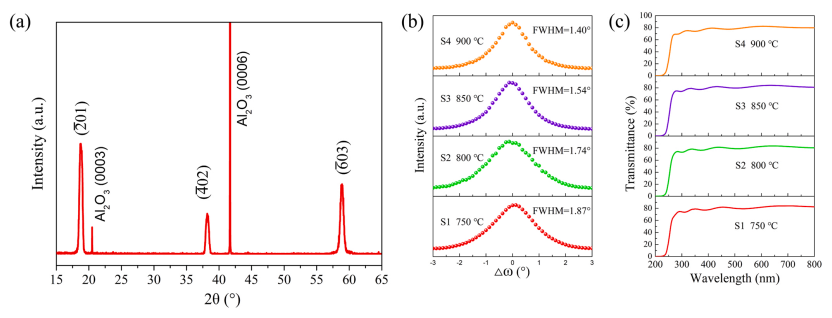
Fig. 1. (a) XRD 2θ-ω scan pattern of S1; (b) XRD rocking curves of the (-201) reflection for S1-S4; (c) optical transmission spectra of S1-S4.

Fig. 2. (a) The schematic diagram of the devices fabricated on the β-Ga2O3 heteroepitaxial films; (b) the Idark of DS1-DS4; (c) the I254 of DS1-DS4.
DOI:
doi.org/10.1016/j.jallcom.2025.179771
